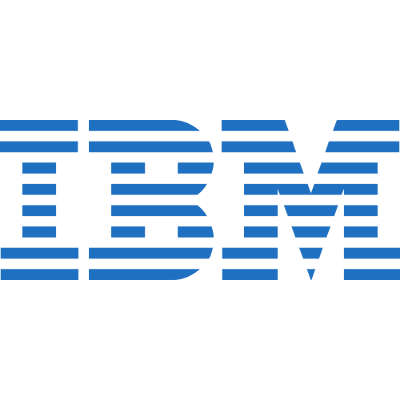100+ Years Ago, IBM Started Just Like Any Other Business

Of the many technology companies in the public eye, IBM is one of the oldest and perhaps the most recognizable–but do you know the story behind Big Blue? It’s a history of innovation and revolution in computing that stretches back over 100 years, to when it was created by uniting three existing companies.
In 1911, a man named Charles Runlet Flint merged two of his existing companies, International Time Recording Company and Computing Scale Company of America with a critical third company that he had just acquired: Tabulating Machine Company. This new company was known as the Computing-Tabulating-Recording Company (or CTR).
The machines made by CTR were capable of sorting, analyzing, and eventually running calculations based on punch cards that were input into the machine. While this development had clear business applications in hindsight, it wasn’t until the controversial Thomas Watson was brought in as company president (after deftly avoiding lasting consequences from a conviction of violating the Sherman Antitrust Act–the act that bans monopolies) that the value of the tabulating division was focused upon.
Not only did Watson know his target audience well enough to know that the business-oriented tabulating machines would be in high demand as the United States became increasingly business-oriented itself, but he also understood the value of presenting CTR’s offerings as a service, rather than a product. This arrangement proved to be mutually successful for both CTR and its clients, as the sales team was able to inform the company of what their clients wanted to see from them next, thereby allowing the needs of their clients to be met.
By 1924, CTR had been renamed to International Business Machines to reflect the consolidation of the business and echo the timeless feel of other large brands of the day. 1925 saw Watson take up responsibilities as both the chief executive officer and the chief operating officer. In the following years, IBM would thrive in the face of the Great Depression, only receiving a boost from the federal bureaucracies’ need for computing devices after President Roosevelt’s New Deal mandates. Demand for the tabulation machines continued to increase during wartime, and by the time Thomas Watson, Jr. was brought on as his father’s successor in 1952, computers were slowly becoming more and more common in the office environment. Many companies had a simple transition, as they were simply trading their IBM tabulators for computers.
IBM truly went global in 1949, offering sales worldwide in a total of 58 countries. IBM World Trade Corporation dominated the global market everywhere but Japan and the United Kingdom, achieving a market share of (only) 33 percent in those countries.
However, in 1952, IBM was again hit by an antitrust lawsuit from the US government, and more critically, another from a niche computer pioneer called Control Data Corporation. IBM powered through these challenges, as well as shifts in leadership until the 1980s. At this point, Big Blue began to falter under pressure from other niche competitors. As a result, the company changed their management strategy, and weathered through business fluctuations until 2004, when they again stabilized their success rate.
IBM’s story of one of success, and there are lessons to be learned here for your own business. By forming the right partnerships and providing a product or service that’s in growing demand, your company can grow exponentially. IBM also shows business owners how to overcome challenges, like diversifying what you do in order to weather the inevitable changes in the marketplace, as well the importance of strong leadership. By learning from the successes of companies like IBM, who knows, maybe your SMB can do what it takes to rise to the top!
4 Steps to Getting Started With Digital Transformation

Smart business owners always look for ways to improve the way their organization functions. Digital transformation is one of these ways, as it allows for organizations to use technology to minimize waste and enhance workflow. To help you with digital transformation, we’ll walk you through what it is and how it works.
Digital Transformation in the Wild
One example of how digital transformation works can be seen in McDonald’s. In an attempt to streamline order processing, McDonald’s is using kiosks at some locations to reduce the time it takes to order and deliver food. These kiosks allow hungry customers to pay with a variety of methods, including Apple pay. Other food chains have already implemented features like online ordering to provide additional convenience to customers. Both of these examples are ways in which digital transformation has allowed modern businesses to improve the way they function in a substantial way.
Digital transformation allows businesses to create a unified technology platform that changes or completely revamps the way operations are carried out. It’s basically a way to improve your company’s operations by using data, analytics, and other digital tools. Digital transformation lets businesses adapt to new trends and capture new opportunities.
All of this might seem simple on paper, but the implementation process has more than a few roadblocks to watch out for. If your business wants to implement digital transformation, here are a few steps to get started.
Consider the Scope
There’s a lot of work involved in the implementation of digital transformation. Therefore, it’s crucial that you don’t underestimate the scope of this process, as you could potentially end up in a situation where you’re out of time and resources. End-to-end implementation requires a careful analysis of just about every possibility. To meet this goal, you’ll need to rely on your department managers and C-suite staff to better understand how technology affects specific parts of your organization. Once these processes have been defined and outlined, you can move toward creating a unified platform to best match them.
Start From the Beginning
While you might want to digitize your current infrastructure as soon as possible, it’s important that you consider, first and foremost, your current technology needs. The reasoning for this is simple–it’s possible (even likely) that your operational infrastructure is outdated in at least some capacity. Therefore, you should invest in new solutions that recreate your current business processes, as well as reimagines them in better, more efficient ways. In this case, you’re taking advantage of improving operations to an entirely different level.
Build Transformation Alongside Production
It’s likely that the solutions and processes you implement could disrupt your current operations, so you want to first make sure that digital transformation is possible without completely hampering your current infrastructure. To this end, you need proactive migration, along with a thorough testing procedure to ensure that implementation doesn’t hinder production. Virtualization and cloud computing are great ways to make this process less difficult, as you can use isolated containers for testing.
Plan for the Future
During the implementation process of digital transformation, you need to keep future flexibility and functionality in mind. Your goal should always be to improve processes while also keeping unforeseen changes in mind. Since your assets following digital transformation will be digitized, you need to take this into account when planning any future additions to your infrastructure.
Catalyst Technology Group can assist your business with the implementation process of digital transformation. To learn more about how we can help your organization with a digital transformation from start to finish, reach out to us at (317) 705-0333.

